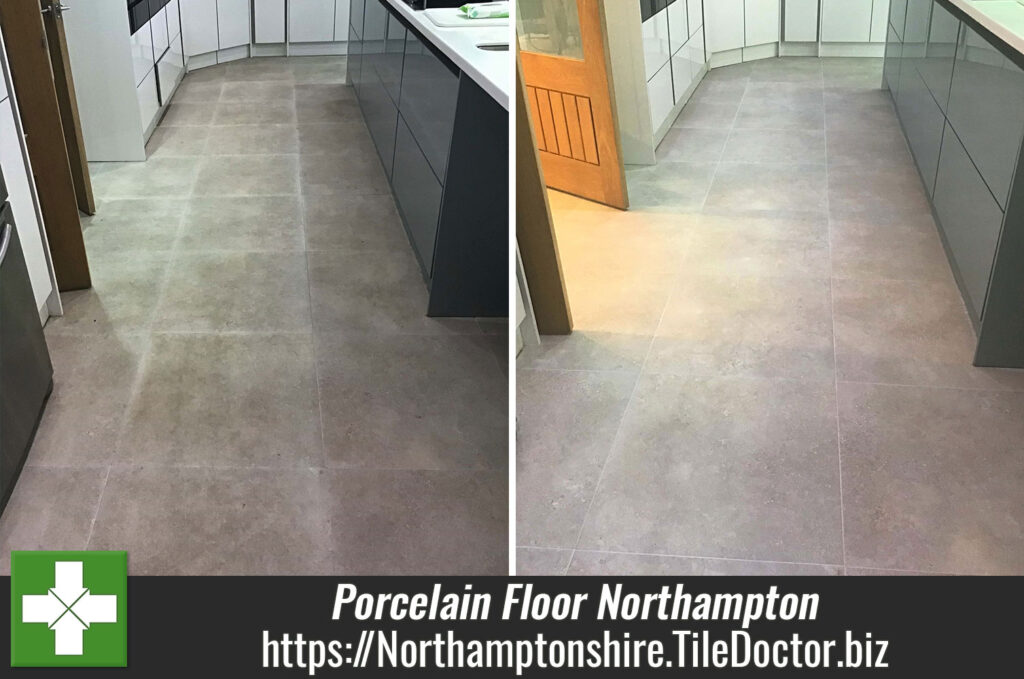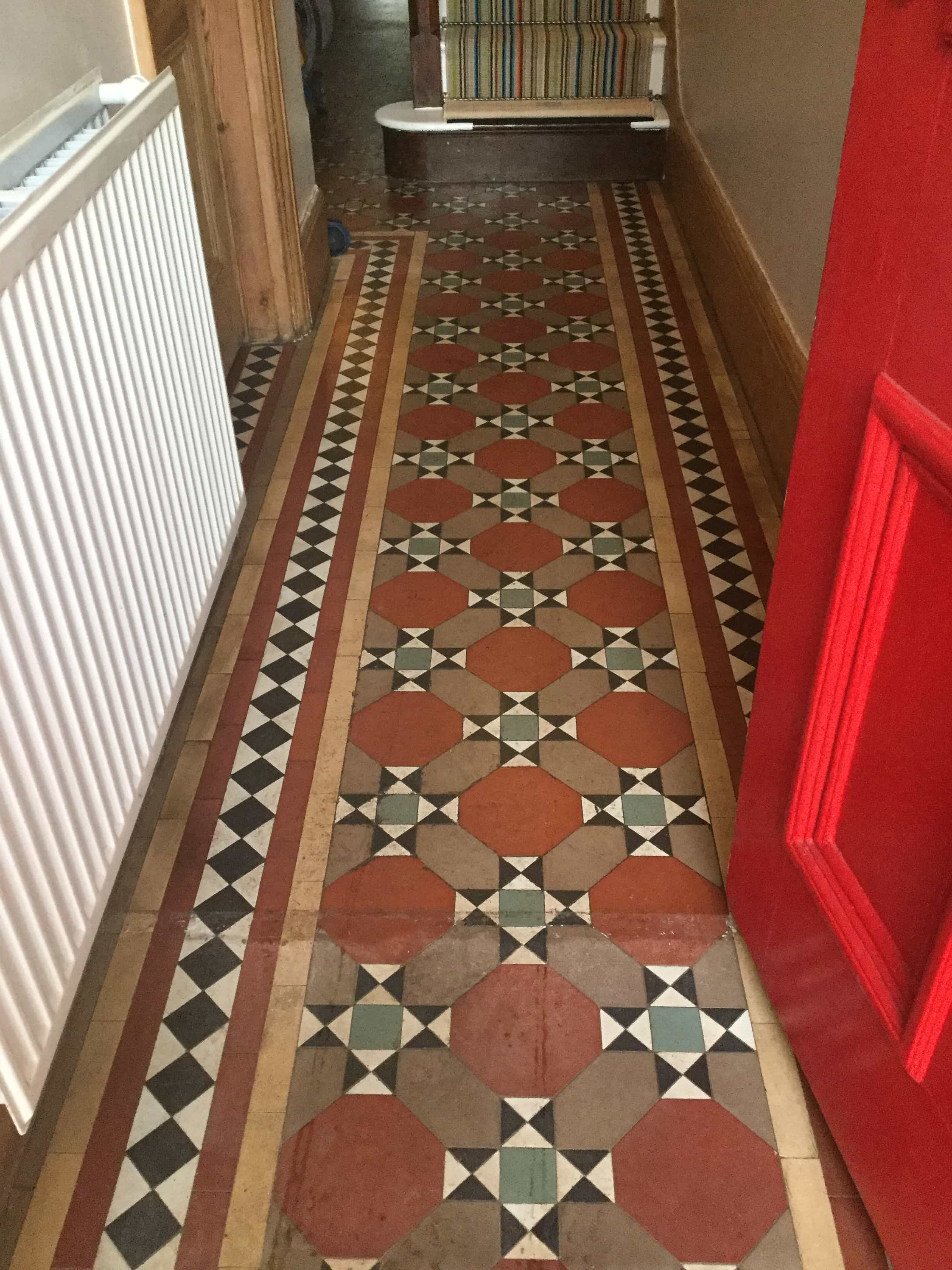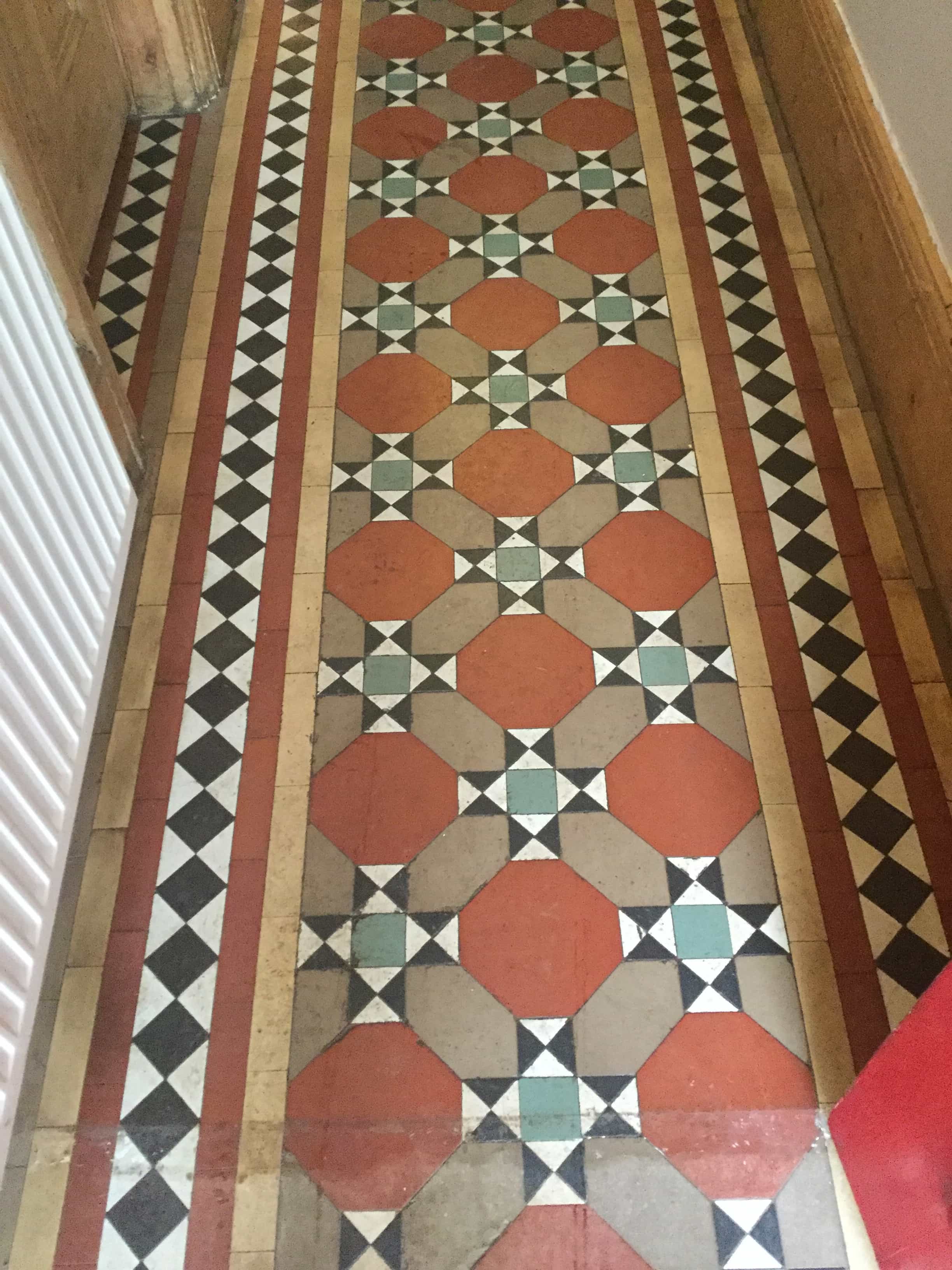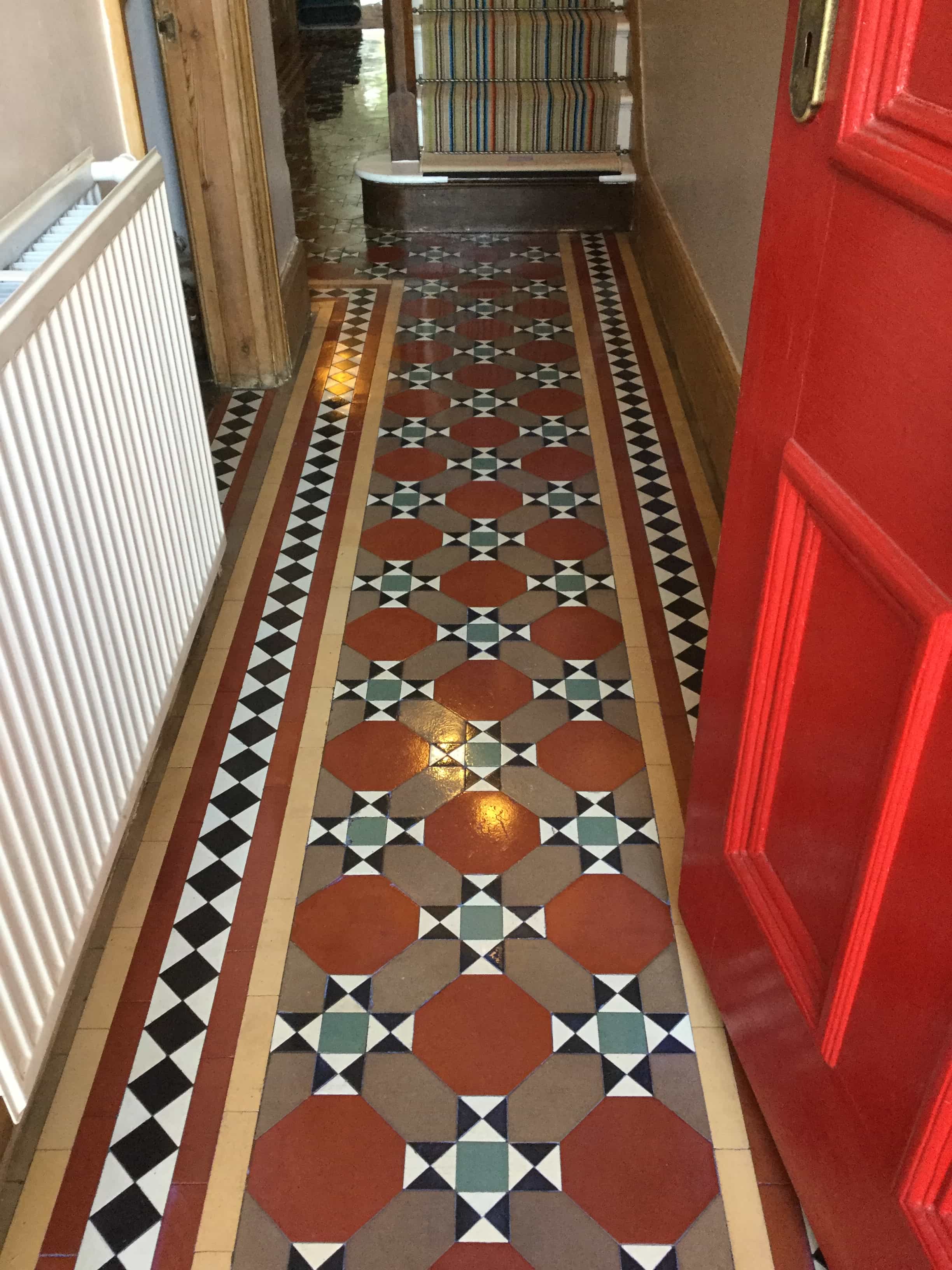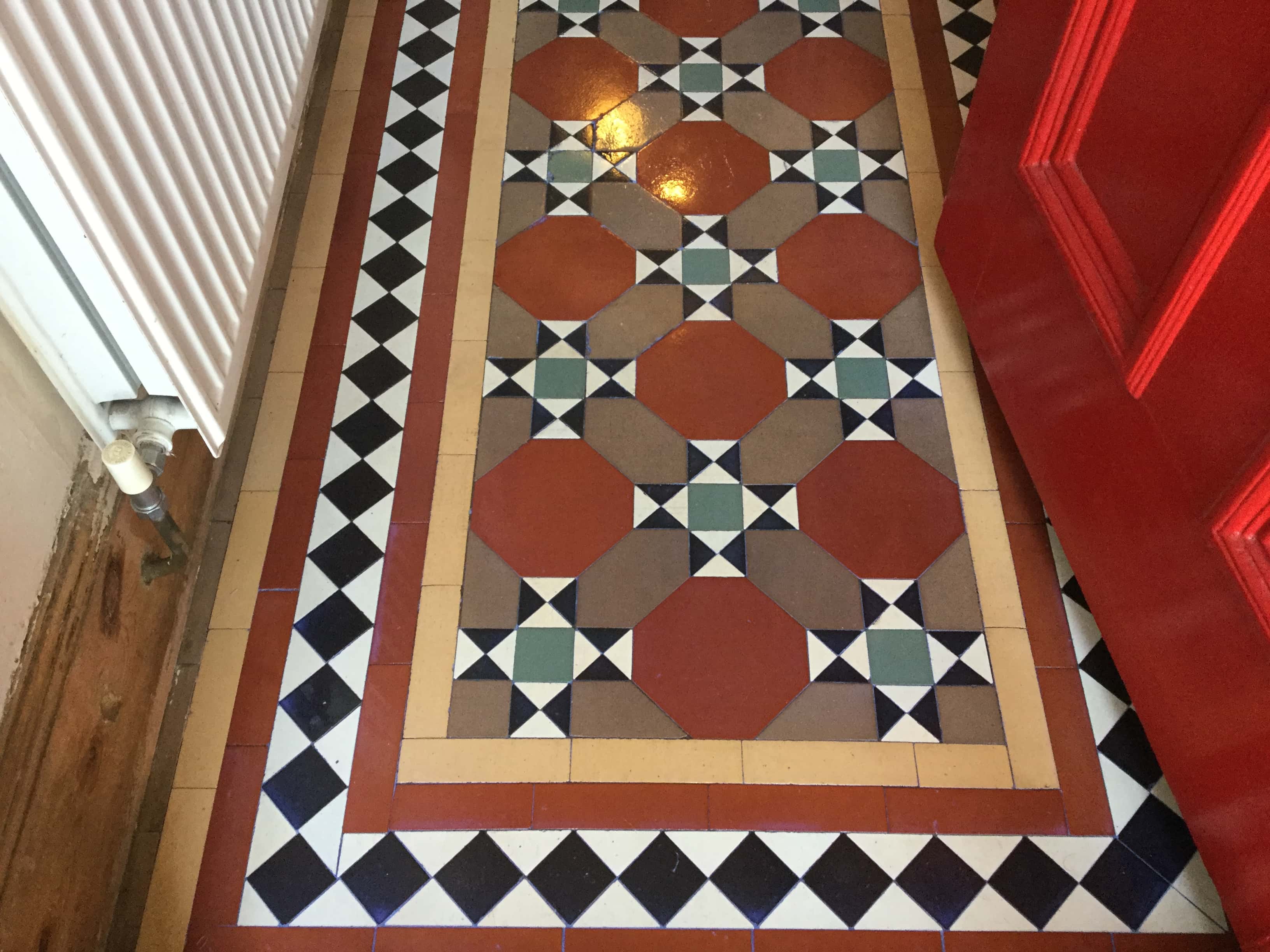Removing Polymer Grout Haze following Porcelain Floor Installation in Northampton
This client from Northampton called contact me about their newly installed Porcelain tiles which appeared to be much darker than they remembered from in the shop. They were disappointed with their appearance and so I agreed a time to pop round, diagnose the issues and come up with a solution.

Once at the property I quickly established after testing a couple of tiles that there was grout haze over the entire area from installation. This happens when the grout starts to dry on the tile before it is cleaned and fully rinsed off. This problem was compounded by the customer vigorously mopping the floor with several different products trying to resolve this issue themselves and the product building up and attracting more soil to the areas, therefore darkening it further.

The test clean I conducted removed the grout haze to reveal the tile they had been originally expecting. Impressed with the results from the test they asked me to repeat the process on the whole floor which included the kitchen and adjoining dining area. I worked out a quote which was agreed and a date scheduled for my return.
Removing Grout Haze from a Porcelain Tiled Floor
Fortunately, the owner knew which grouting product was used when laying the floor, this was very useful as polymer-based grouts need a different approach to traditional grouts. As it turns out it was a polymer-based grout which makes sense as they are known to set faster and cause this problem as a result.
The process I used was to apply Tile Doctor Remove and Go to a workable section of the floor which was approximately 8m2. The solution was allowed to dwell for ten minutes or so prior to agitating with a rotary brush machine. This area was then rinsed off with water and a wet and dry pick-up machine. This process is used to break down the polymers in the grout but does not fully remove the haze from the tiles, that is covered in the next section.
Part two of treating the grout haze involves the application of Tile Doctor Grout Clean-Up to the tile and allowing it to dwell for a further ten minutes, a black buffing pad is then used with the rotary machine to scrub the product into the Porcelain tile. As before the soiled solution is removed with another rinse and extracted with the wet and dry pick-up machine.
Once that was done, I inspected the floor to ensure all the grout haze has been removed and repeated the 2nd stage process where required.
Sealing a Porcelain Tiled Floor
I allowed the floors to dry off overnight and returned the following day to apply Tile Doctor Ultra Seal Sealant over all the areas, this is especially good for protecting the grout lines from staining.

Given the dark colour of the Porcelain tiles it’s difficult to appreciate the improvement from the photographs, my customer was extremely happy with the result though and left the following glowing review:
Before leaving I made sure to discuss aftercare cleaning, which for this floor I recommend using Tile Doctor pH Neutral Tile Cleaner which is a gentle but effective cleaning product designed for use on sealed tile and stone.

Porcelain Tile Cleaning in Northamptonshire
Removing Polymer Grout Haze following Porcelain Floor Installation in Northampton Read More »

